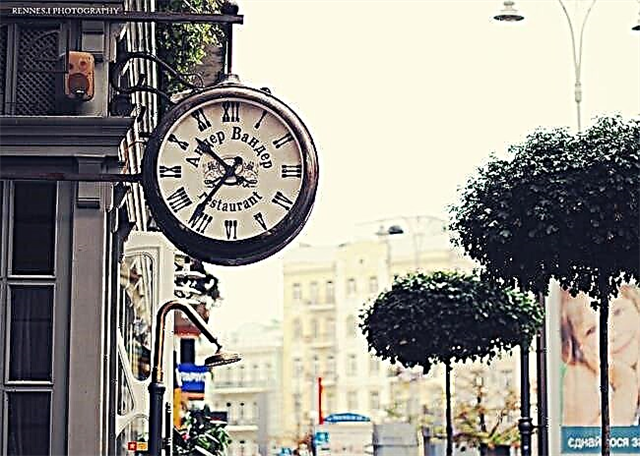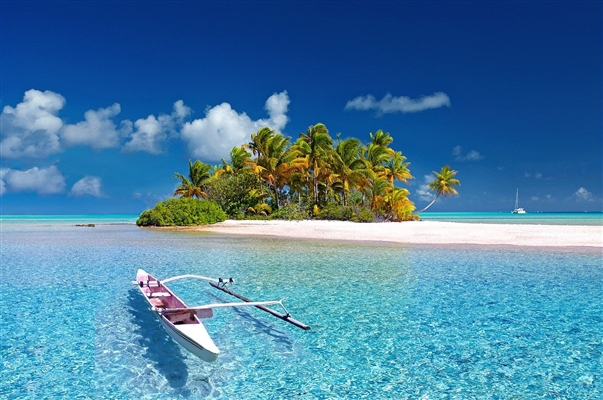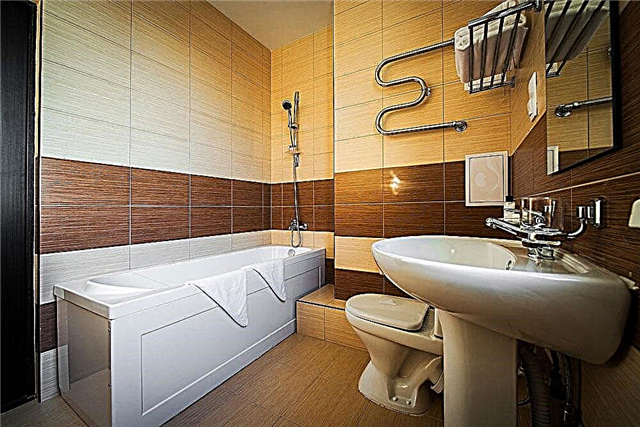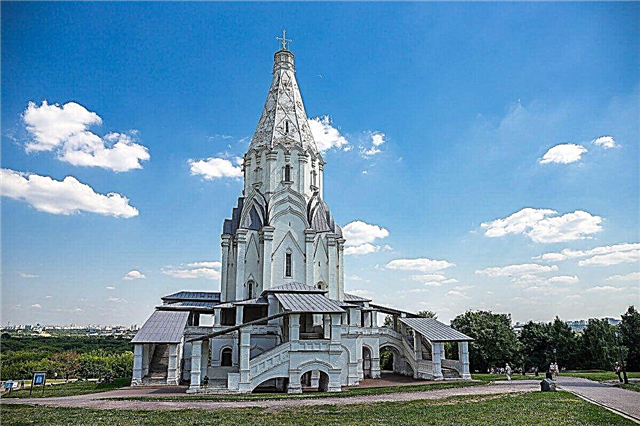The Kolomenskoye Museum-Reserve is a former royal residence. The first museum was opened here in 1923: then the main theme was wooden architecture. Most of the facilities were built in the 17th century. The main dominant of the historical area is the Church of the Ascension, which is a UNESCO protected area.
An amusement park with modern attractions for all ages is open on the territory of the museum-reserve. The Ethnographic Center allows you to travel back in time and see how our ancestors lived. Among the natural attractions are the gardens, the Golosov ravine with its stones and century-old oaks.
Attractions of Voznesenskaya Square
Top objects on the main square of the Kolomna Museum-Reserve.
Church of the Ascension
It was first mentioned in 1532, which makes the church the first stone hipped-roof temple in Russia. Legends associate the construction with the birth of the long-awaited heir of Vasily III - Ivan the Terrible. The architecture of the church is called "flying": despite the impressive size of the building, it looks graceful. The re-lighting of the temple took place in 2000, and the reconstruction was completed in 2007.

Church of St. George the Victorious with a bell tower
The date of construction is the 16th century, but subsequently the monument of Russian architecture has changed several times. Its bell tower originally belonged to the Church of the Ascension of the Lord. Subsequently, it was converted into an independent temple, and a large refectory appeared next to it. It was consecrated in 2000. Now the church contains old printed books, icons, tiles and other exhibits that tell the history of the cultural heritage site.

Vodovzvodnaya tower
A laconic snow-white structure is the central element of a complex hydraulic engineering system. A water-lifting mechanism was installed in the tower in the 70s of the 17th century, which helped to provide the Tsar's yard with water. Presumably, falcons specially trained for hunting were also kept inside. Currently, the tower houses a museum exposition dedicated to the history of water supply of the past centuries.

Palace pavilion of 1825
Part of the lost palace. The main building was dismantled as unnecessary. Only the pavilion survived, which served as a teahouse at the home theater. Statues of lionesses are installed on both sides of the stairs in front of the entrance. The main façade overlooks the river and offers a picturesque view. After reconstruction in the mid-2000s, the pavilion was restored to its original appearance. It hosts exhibitions and concerts.

The main observation deck of Kolomenskoye
It is located on the high bank of the Moscow River near the Church of the Ascension of the Lord. The observation deck is equipped with free binoculars. The area is safe for visiting with children. A picturesque view opens from here, including the Maryinsky park, the 10th lock of the Perervinsky hydroelectric complex and the Nikolo-Perervinsky monastery. Going downstairs, you can order a river walk at the pier in the warm season.

Attractions of the Tsar's yard
Interesting historical and architectural objects of the museum-reserve.
Front Gate Complex
The main gate of the Tsar's court has four tiers. The first has two arches of different sizes. In the second, in the past, there was a mechanism that made a sound like a lion's roar. The third was in charge of the clock. And the fourth is an octagon with bells, on the roof of which a two-headed eagle is installed. Nearby are the Colonel and Order Chambers, erected, like the gate, in the 17th century. And Sytny Dvor appeared a little later. This is the main surviving building of the complex.

Temple of the Kazan Icon of the Mother of God
Built in honor of the centenary of the capture of Kazan. Initially, it was a brownie and was connected by a 50-meter walkway with a wooden palace. The palace was dismantled as unnecessary, and the church became a parish. The main icons are the Sovereign Icon of the Mother of God, considered miraculous, and the list of the Kazan Icon of the Mother of God. At the very beginning of the Great Patriotic Service, they stopped, but they were quickly returned and are carried out daily to this day.

Foundations of the Khlebny and Kormovy yard
Located near the Spassky Gate. In the Khlebnoye and Kormovoye yards, they baked bread and prepared other food for the sovereign. The buildings were lost, but excavations were carried out in their place and the remains of the foundations were found. We managed to partially restore the layout. And the excavated values and household items went to the Kolomna museum collections. The architectural and archaeological site has become a full-fledged open-air museum.

House of Peter I
Built in 1702 at the mouth of the Northern Dvina. Peter I lived there for two months to personally supervise the construction of a fortress designed to protect Arkhangelsk from the Swedish fleet. In 1934, the house was moved to Kolomenskoye. It houses the memorial museum of Peter I. And next to it, in 1998, a monument was erected depicting the king in full growth. This is the author's copy of the sculpture that can be found in the city of Antwerp.

"Polovtsian woman"
The stone statue was found in the southern Russian steppes. Presumably, it was a grave monument on a burial mound. Belongs to the Polovtsian culture. The age of the "woman" is over 900 years old. The roughly hewn silhouette has no outlined face. The arms are brought together, the legs are only indicated. Such a valuable exhibit was brought to Kolomenskoye in the 30s of the XX century. It was installed on Oak Alley.

Spassky (Rear) gate
Three gates are built into the fence surrounding the Tsar's courtyard. The Spassky Gate is also called the Back Gate. The icon of the Savior Not Made by Hands was kept in the icon case over the arches, hence the original name. These gates were used mainly for household needs. Then the passage became the main one. It was decorated with Peter's monograms and two-headed eagles. In the early 2000s, a major restoration took place.

Museum of Wooden Architecture in "Kolomenskoye"
The four main objects of the museum of wooden architecture in the reserve.
St George the Victorious
The three-domed church was transported from the Arkhangelsk region to Kolomenskoye in 2008. It was built in 1685 on the banks of the Erga River. After the revolution, the church was deprived of its domes and abandoned. Along with the relocation, we had to deal with reconstruction, as the monument of Russian architecture was in a deplorable state. You can go inside only during the warm season. From mid-autumn to mid-spring, the building has been mothballed.

Bratsk prison tower
A monument of military architecture. The tower was assembled in Siberia in the 17th century, and it reached Kolomenskoye only in 1959. The lower living area is much higher than the upper one. A staircase leads to the conditional second floor from the street. A small tower is installed above the roof for all-round visibility. During the 2007 restoration, the decayed parts of the logs were replaced, using modern materials, but old woodworking techniques.

Moss tower of the Sumy prison
The fortress built of logs played an important role in the defense against the Swedes. She resisted even under fire, although traces on the wood remained. The Moss Tower is the only surviving part of the Sumy prison. It was dismantled and kept in storage for over 80 years. At the beginning of the 2000s, the architectural monument was restored in Kolomenskoye. On the third tier, there is an exposition telling about the defense of the Russian north.

Tower of the Nikolo-Korelsky Monastery
The only structure of the monastery that has survived unchanged. The Nikolo-Korelsky Monastery was erected no later than the beginning of the 15th century not far from Arkhangelsk. After the revolution, its buildings were either destroyed or became part of a regime enterprise. And the tower, which is a travel pass, was transported to Kolomenskoye.It is made of wood, topped with a cross; sections of the wall remain on both sides.

Interesting and popular places in Kolomenskoye
Places and objects of the reserve museum, which are definitely worth seeing.
Palace of Tsar Alexei Mikhailovich
The construction period is the second half of the 17th century. It existed for about a hundred years and was dismantled as unnecessary and due to dilapidation. In 2010, in Kolomenskoye, they decided to recreate the palace in full size and repeating the layout of the original. The complex covers an area of 7000 m², it has five levels and unites five buildings. Both external and internal decoration amazes with detail and beauty.

Church of the Beheading of John the Baptist in Dyakov
Stands on the high bank of the Moskva River. The appearance of the architectural monument is associated with the reign of Ivan the Terrible. Outwardly, it resembles the Cathedral of St. Basil the Blessed. Although the temple looks like a single whole, it consists of five separate structures, closely adjacent to each other. They have separate entrances and altars. For several decades, the church was in disrepair. Re-coverage took place in 1992. Services are held on weekends and holidays.

Exhibition hall "Atrium"
When the museum collection had just begun to be assembled, premises were needed to store the funds. One of these turned out to be "Atrium". It became the first building specially built for this purpose. The name is given to the showroom because of the patio. In 2006, a second floor was added, which expanded the capabilities of the complex. The main exposition - "Secrets of Russian Masters" - is in demand all year round.

Yarmorochnaya square
This territory is occupied by various attractions and exhibitions and sales. Lots of activities for children, but they are seasonal. In winter, a skating rink is flooded and tubing slides are installed nearby. During the period of folklore festivals, also held at the fairground, the number of visitors to Kolomenskoye increases. The main event is the honey fair.

Luna Park Carousel"
A park with attractions for the whole family invites guests during the warmer months. There are three types of trampolines installed on its territory: from primitive to extreme. There are water adventures: from boats, where children are allowed only with a parent, to the "Canoe" attraction, where children will have to go through a simple obstacle course on their own. Children's room, merry-go-rounds, race track - an incomplete list of entertainment in the amusement park.

Museum-exhibition of sand figures
It takes place in Kolomenskoye during the warm season. The themes for the sculptures are different every year. Amazing works are created right on the spot and saved for several months, when anyone can see them. The height of the sculptures is from 3 to 6 meters. Sandboxes are set up nearby for children and miniature contests are periodically held. In 2017, the reserve museum even hosted an impromptu sand figure world championship.

Moskva River Embankment
Due to the proximity of the location of the museum-reserve, this part of the embankment is called Kolomenskaya. It starts from Kolomenskaya Street and stretches to the sluice canal. The total length is less than 2 kilometers. In good weather, it is traditionally crowded here. On one of the promenade sites, there is a tent and special equipment that can be rented for a wedding or any other event.

Ethnographic Center in Kolomenskoye
Places and objects that introduce you to the life and life of that time.
Water mill on the Zhuzhe river
Appeared in Kolomenskoye in 2007. Its prototype is similar buildings of the middle of the nineteenth century. The mill is a wooden hut. She stands on a bridge thrown over the riverbed. Above, a dam had to be built so that the water rose to the required level, and the millstones began to turn. The construction of the mill contributed to the cleaning of Zsuzsa and the improvement of the coast.

Falcon yard
It rises on the left bank of the Zhuzhi. Tsar Alexei Mikhailovich began to visit the district precisely because of the falconry, which he could spend days on end. Therefore, it was so important to restore the falconry. The wooden two-story building is surrounded by a fence. It was recreated from an old photograph. The original was not here, but in Kolomenskoye itself. The construction of the new falconry yard was approached carefully, having worked out the details, including the platbands.

The farmstead of a blacksmith
The complex includes: a blacksmith's house, a blacksmith's son's house, a smithy and a barn. The forge is active, it is used during excursions for demonstration. In front of tourists, blacksmiths create real works of art. Most of them can be bought at the gift shop. In addition, there is a house tour to compare the lives of a blacksmith and a peasant. Inspection of the entire exposition lasts no more than an hour.

Kolomna peasant's estate
The estate includes: the main house, a stable, which contains a horse and a cow, a barn for storing grain, a poultry house with chickens. The furnishings in the house are typical for non-poor peasant families of the 17th century. Everything looks as if the owners were away for a while and are about to enter the door. Animals can be petted and even fed. A tour of this part of the ethnographic center takes no more than an hour.

Beekeeper's estate
Kolomenskoye includes numerous gardens with fruit trees. Among them, a beekeeper's estate was built. The main house and outbuildings were erected next to the apiary. Here are two exhibitions at once - "The history of beekeeping" and "Peasant hut". Among the exhibits there are both copies and originals of things and furniture of the past. The schedule of excursions and the possibility of visiting the estate depends on the season.

Dutch house of Peter I
A copy of the oldest wooden house in the Netherlands. The original was erected from parts of decommissioned ships in 1632 in the city of Zaandam. Peter I lived there for a week. The Dutch government presented Russia with a full-size model of the house in 2013. Not only the external, but also the internal appearance is repeated. The interiors are complemented by portraits of the emperor and his wife, an icon of the Savior Not Made by Hands, as well as old rarities.

Stables yard complex
It is a miniature village. The central street is called Sadovaya Sloboda. In tsarist times, the stables housed up to 130 horses. The premises have not survived, but they were partially restored according to detailed descriptions. In addition, they rebuilt: the house of grooms, a hayloft, a forge and a coach house, as well as a levada. On a tour of the complex, you can learn about equestrianism in Russia and stroke a thoroughbred horse.

Natural attractions in "Kolomenskoye"
The most interesting and beautiful natural objects in the museum-reserve.
Dyakovsky ravine
A stream with the same name flows along the ravine. The length is a little over a kilometer. Before flowing into the Moskva River, on the right side, it flows through an underground collector. Excavations of the nearby Dyakov settlement started in 1864. They gave an idea of the traditions of the people who inhabited these territories in ancient times. The status of the natural area is a promising specially protected area.

Voices ravine
It stretches from the Moskva River to Andropov Avenue. The relief of the area around the ravine is varied. In it there is a refined pond, as well as a "wild" stream. Lush vegetation makes the area around especially picturesque in the summer. In the ravine you can find the "Goose-stone" and "Devy-stone". Sacred values and an impressive age are attributed to them, but data on boulders appeared only in the 20th century.

Historical gardens of Kolomenskoye
Kolomenskoye is a concentration of gardens. There were six of them: Bolshoi, Novy, Krasny, Kazansky, Voznesensky and Dyakovsky. The last three have survived. In 2015, the restoration of the gardens began, which lost their former splendor and most of the trees. The Dyakovsky Garden is located behind the Voice Ravine, its layout is unchanged. Kazan Garden, at the suggestion of Catherine II, was turned into a walking garden.Voznesensky appeared later than others and is located closer to the Kashirskoye highway.

Pharmaceutical garden
The traditional pharmaceutical garden was established in Kolomenskoye in the 17th century. They cultivated not only medicinal herbs used in folk medicine, but also spices for the sovereign's table. The vegetable garden has now been converted into a 1000 m² walking area. In summer, visitors are greeted by a riot of colors and aromas in the beds. In winter, tourists are deprived of the opportunity to enjoy the attraction.

Park "Lipki"
Linden alley separates the park from the Kazan Garden. The walking area was laid out here in 1825. Historically, for the Slavs and their direct descendants, the linden was an important tree. Perhaps this is due to the choice in her favor for the creation of the park. Through Lipki, Torgovaya Street is connected with the main part of the Museum-Reserve. There is another linden alley in Kolomenskoye: it is located in the Tsar's courtyard and stretches from the Rear Gate to the Front Gate.

Age-old oaks
There are two places in Kolomenskoye where age-old oaks grow. At the Tsar's yard there is a chain of three massive trees. They are believed to be around 300 years old. The oaks near the Ascension Garden are older: their age ranges from 4 to 6 centuries. The largest is 26 meters high. Some of the trunks are fenced. If the trees are sick, their bark is smeared with special clay.












